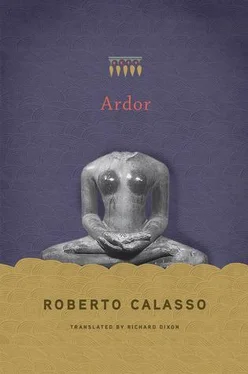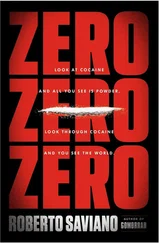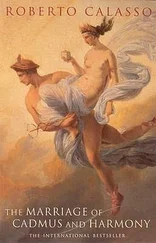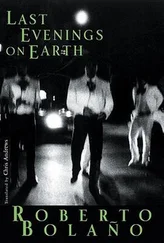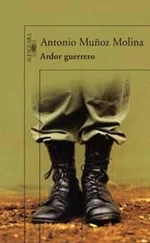— Julius Schwab, Das altindische Thieropfer
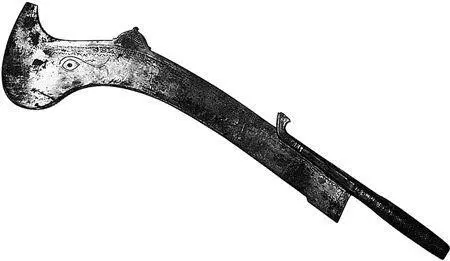
The question to be answered: Why does the imbalance between divine and human have to be corrected with a killing?
* * *
Killing is present everywhere in the food chain that runs throughout the animal kingdom. In each link particular species have to kill others in order to survive. With man, the chain is not broken, indeed it expands. But man is the only being who reflects upon killing, who builds up the act into a sequence of prescribed gestures. As the Vedic ritualists say, man is the only one of the sacrificial victims who also celebrates sacrifices. This happens not because man occupies a final, culminating position in the food chain. Above him are alpha predators who have terrorized and hunted him for millennia — and can still get the better of him. The capacity to reflect upon killing is therefore an anomaly in the food chain, an unexpected divergence that occurs only in that link of the chain. Above it and below it, everything continues and proceeds as always, unchanged. The repertory of gestures is fixed in advance and takes no account of history, which is really a history of that anomaly: the transformation of a being who is basically vegetarian into an omnivore. It is a history of the various ways in which that anomaly appears in actions and gestures. If the food chain were observed from far away in space, human history would appear like a deformed link that assumes a multiplicity and variety of forms compared with the geometrically rigorous fixity of all the other links.
* * *
The greatest risk for sacrifice is that it too closely resembles the simple slaying and butchering of an animal. It is essential to anticipate this question: why invent the highly complex ceremony of sacrifice, if in the end everything is to be reduced to dividing up pieces of meat? Here is the answer given by the Aitareya Brāhmaṇa : the sacrificial victim shall be divided into thirty-six parts, because the bṛhatī meter consists of thirty-six syllables: “By dividing it in this way, the victim is made into a celestial being, whereas those who proceed in another way tear it apart like rogues or criminals.”
When the sacrificial rite comes closest to the crude, uncontrolled, formless course of things, then the last defensive barrier — the only one that can still separate behavior conducive to order from the behavior of “rogues or criminals”—is meter. And here we see the great role that meter plays in the Veda, as the primary articulation of form, as the first effective device for breaking away from the meaningless and arbitrary succession of existence. And thus the tireless development of correspondences between particular meters and particular gods. Here it is said, among other things, that “the bṛhatī is the mind.” And so, if the mind coils within itself the thirty-six fragments of the sacrificial victim, this alone is enough to transform those pieces of flesh into fragments of a whole that has a life of its own — and is perhaps also “a celestial being.”
There is no doubt: the dividing line is extremely fine. But the suspicion arises that this was perhaps an essential element in the game. In the end, it was much nobler and much simpler to pour something — even an ordinary liquid such as milk — to dedicate it to the gods. A solitary, highly potent, bloodless ceremony, the origin of every sacrifice. We might therefore imagine that, even when a precious liquid such as the soma was offered to the gods, it followed the gestures of the agnihotra. But this was not the case. The soma rites had to be accompanied by a sacrifice of animals. It was as if at that point sacrifice sought to put itself to the test, sought to show how close it was to what necessarily happened in normal, nonritual life, which is always a life of “rogues or criminals.” And, at the same time, how distant it was, as was shown by the mind-boggling complication of the whole agniṣṭoma , the soma sacrifice where animal killing was only one of the many sequences of prescribed gestures.
* * *
Puruṣa is a most mysterious figure. The name is often translated (even by Renou) as “Man.” Yet in the Ṛgveda it is not the word normally used to describe Man. Whereas in the Brāhmaṇas, human sacrifice is called puruṣamedha (a word not found in the Ṛgveda ). Manu is much more frequent in the Ṛgveda —and the origin of the word (from man- , “to think”) much clearer. Puruṣa, however, appears in hymn 10.90, which tells how his body, dismembered in the sacrifice, gives birth to the various parts of the universe, but in the rest of the Ṛgveda the word appears only in passing, in another two hymns. As for its derivation, the only plausible explanation is from pūrṇa , “full.” It can therefore be associated with the “stanza of plenitude” in the Bṛhadāraṇyaka Upaniṣad. The Ṛgveda presents Puruṣa and the dismemberment of his body only once, to show how order is established: “These were the first laws.” In the same way, Prajāpati appears only once, in hymn 10.121, to answer the question on ka , on who must receive the sacrifice. It is irrelevant whether or not the last stanza, where his name is spoken, was added later. The crucial element is that the figure on whom everything depends — whether Puruṣa or Prajāpati — is mentioned in only one hymn out of the thousand and twenty-eight hymns of the Ṛgveda. On the other hand, Puruṣa and Prajāpati are referred to endlessly in the vast and rugged plains of the Brāhmaṇas and the Upaniṣads.
It can be said that, in the Ṛgveda, the two figures are used, first of all, as support for two phrases that have a formidable capacity to be expanded, as will be seen throughout the rest of the Veda. For Prajāpati, it is the question repeated at the end of every verse, before his name is spoken: “To what god shall we offer the oblation?” For Puruṣa, the phrase appears in the last stanza: “The gods sacrificed the sacrifice through the sacrifice ( yajñéna yajñám ayajanta devắs ).” The particularly dense and solemn nature of the formula is confirmed by the fact that it is repeated in identical terms, together with the whole of the next verse, at the end of hymn 1.164, the dizzying hymn of Dīrghatamas, the ṛṣi called Long-Darkness. Here too, scholars seem to hesitate when dealing with such a bold form of words. Geldner translates: “With the sacrifice the gods sacrificed to the sacrifice.” But yajñám is an accusative, not a dative. Renou translates: “The gods sacrificed the sacrifice through the sacrifice.” And the meaning obviously changes. But even Renou is still evasive. This is how he comments on the verse: “In other words, Man is at the same time the object offered (victim) and the object to which one aspires (divinity).” But at least one further explanation is needed: in the Vedic verse the endless circle of self-referentiality is outlined, which men have been obliged to pursue since then, up to Gödel and beyond. An endless circle that is not a defect of thought, but a foundation of thought itself. The ṛṣis were sure of it: “To this the human ṛṣis , our fathers, adhered when the original sacrifice was born in primordial times. With the mind’s eye it seems to me that I see them, those who first sacrificed this sacrifice.”
As to Puruṣa: it is true that the gods behaved toward him like the officiants who tie the victim to the yūpa , the “post.” And it is stated clearly: “When the gods, in laying out the sacrifice, had bound Puruṣa as victim.” And the following passage is also true — that the gods cut Puruṣa into pieces, as happens with every animal victim (“when they had cut up Puruṣa”). But at the same time Puruṣa was already the sacrifice, as the Brāhmaṇas fully explain. Together with Prajāpati he had appeared from the golden egg that floated on the waters: “After one year, from it was born Puruṣa, this Prajāpati.” And Prajāpati, as is repeated insistently, is the sacrifice. So the gods, who operated on his body, were none other than his tools. And the same would one day be the case for men, who imitate the gods in their acts. Only this could lighten the guilt for having killed the one from whom, piece by piece, everything was born: meters, stanzas, chants, but also the sky, the sun, the moon. Guilt that the gods heaped onto men, before men, in turn, heaped it onto the gods.
Читать дальше
